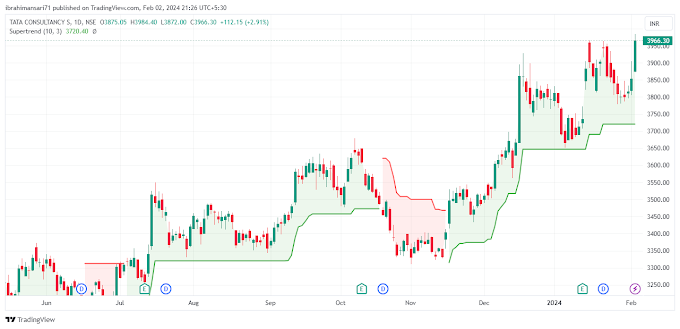Free Stock Market Course (Day 24)
Risk Management in Stock Market
 |
| Risk Management |
Introduction:
Investing in the Indian stock market carries a considerable amount of risk but also presents excellent opportunity for wealth growth. It is imperative that investors employ appropriate risk management tactics in order to successfully traverse the turbulent seas of the stock market. The goal of this blog post is to give readers a thorough understanding of risk management in the Indian stock market so they can protect their investment and make wise decisions.
भारतीय शेयर बाजार में निवेश करने में काफी जोखिम होता है लेकिन यह धन वृद्धि के लिए बेहतरीन अवसर भी प्रदान करता है। यह जरूरी है कि शेयर बाजार के अशांत समुद्र को सफलतापूर्वक पार करने के लिए निवेशक उचित जोखिम प्रबंधन रणनीति अपनाएं। इस ब्लॉग पोस्ट का लक्ष्य पाठकों को भारतीय शेयर बाजार में जोखिम प्रबंधन की गहन समझ देना है ताकि वे अपने निवेश की रक्षा कर सकें और बुद्धिमानीपूर्ण निर्णय ले सकें।
Understanding Risk in the Stock Market:
It is crucial to comprehend the many kinds of hazards that are common in the Indian stock market before diving into risk management techniques:
जोखिम प्रबंधन तकनीकों में उतरने से पहले भारतीय शेयर बाजार में आम तौर पर मौजूद कई प्रकार के खतरों को समझना महत्वपूर्ण है:
1.
Market Risk: Stock prices can fluctuate due to the inherent volatility of the stock market, which is influenced by various factors including market sentiment, geopolitical events, and economic conditions.
शेयर बाजार की अंतर्निहित अस्थिरता के कारण स्टॉक की कीमतों में उतार-चढ़ाव हो सकता है, जो बाजार की भावना, भू-राजनीतिक घटनाओं और आर्थिक स्थितियों सहित विभिन्न कारकों से प्रभावित होता है।
2.
Liquidity Risk: the possibility that there won't be enough market activity for an investor to purchase or sell a stock at the targeted price.
संभावना यह है कि किसी निवेशक के लिए लक्षित मूल्य पर स्टॉक खरीदने या बेचने के लिए पर्याप्त बाज़ार गतिविधि नहीं होगी।
3.
Credit Risk: resulting from the potential for a business to miss payments on its debt, which could have an impact on investors' investment value in debt securities.
किसी व्यवसाय द्वारा अपने ऋण का भुगतान न कर पाने की संभावना के परिणामस्वरूप, ऋण प्रतिभूतियों में निवेशकों के निवेश मूल्य पर प्रभाव पड़ सकता है।
4. Operational Risk: related to a brokerage or investing firm's internal systems, employees, and processes that could result in financial losses.
ब्रोकरेज या निवेश फर्म की आंतरिक प्रणालियों, कर्मचारियों और प्रक्रियाओं से संबंधित जिसके परिणामस्वरूप वित्तीय नुकसान हो सकता है।
5. Political and Regulatory
Risk: The stock market may be impacted by modifications to laws, rules, or political unrest.
शेयर बाज़ार कानूनों, नियमों में संशोधन या राजनीतिक अशांति से प्रभावित हो सकता है।
Risk Management Strategies:
1. Diversification: Invest in a variety of industries and asset classes to lessen the impact of a single investment's bad performance.
किसी एक निवेश के खराब प्रदर्शन के प्रभाव को कम करने के लिए विभिन्न उद्योगों और परिसंपत्ति वर्गों में निवेश करें।
2. Stop-Loss Orders: By immediately selling a stock when it hits a preset price, stop-loss orders help reduce possible losses.
किसी स्टॉक के पूर्व निर्धारित मूल्य पर पहुंचने पर उसे तुरंत बेचने से, स्टॉप-लॉस ऑर्डर संभावित नुकसान को कम करने में मदद करते हैं।
3. Asset Allocation: Divide your investing portfolio among several asset classes, such cash, bonds, and equities, according to your financial objectives and risk tolerance.
अपने वित्तीय उद्देश्यों और जोखिम सहनशीलता के अनुसार अपने निवेश पोर्टफोलियो को कई परिसंपत्ति वर्गों, जैसे नकदी, बांड और इक्विटी में विभाजित करें।
4.
Research and Due Diligence: Prior to investing, do a thorough analysis and study on equities. Keep up with the companies in your portfolio's management, financial standing, and market movements.
निवेश से पहले इक्विटी पर गहन विश्लेषण और अध्ययन करें। अपने पोर्टफोलियो के प्रबंधन, वित्तीय स्थिति और बाजार की गतिविधियों में कंपनियों के साथ बने रहें।
5. Risk
Assessment: To ensure that your investing strategy is tailored to your unique situation, consider your financial objectives and risk tolerance. Over time, make necessary adjustments to your portfolio.
यह सुनिश्चित करने के लिए कि आपकी निवेश रणनीति आपकी विशिष्ट स्थिति के अनुरूप है, अपने वित्तीय उद्देश्यों और जोखिम सहनशीलता पर विचार करें। समय के साथ, अपने पोर्टफोलियो में आवश्यक समायोजन करें।
6. Regular Monitoring: Pay careful attention to your investments and the state of the market as a whole. Have the flexibility to adapt to evolving situations.
अपने निवेश और समग्र रूप से बाज़ार की स्थिति पर सावधानीपूर्वक ध्यान दें। बदलती परिस्थितियों के अनुरूप ढलने का लचीलापन रखें।
7.
Emergency Fund: Keep an emergency fund separate to cover unforeseen costs so that your investment capital is not impacted when you're in need of money.
अप्रत्याशित लागतों को कवर करने के लिए एक आपातकालीन निधि अलग रखें ताकि जब आपको पैसे की आवश्यकता हो तो आपकी निवेश पूंजी प्रभावित न हो।
Conclusion:
It takes a combination of market knowledge, methodical decision-making, and potent risk management techniques to successfully navigate the Indian stock market. People can protect their cash from market fluctuations and increase their chances of financial success by being aware of and taking steps to mitigate the numerous risks associated with investing. Remember that managing and minimizing risks wisely is the key to long-term success rather than completely avoiding them.
भारतीय शेयर बाजार में सफलतापूर्वक नेविगेट करने के लिए बाजार ज्ञान, व्यवस्थित निर्णय लेने और शक्तिशाली जोखिम प्रबंधन तकनीकों का संयोजन आवश्यक है। लोग निवेश से जुड़े कई जोखिमों को कम करने के बारे में जागरूक होकर और कदम उठाकर अपनी नकदी को बाजार के उतार-चढ़ाव से बचा सकते हैं और वित्तीय सफलता की संभावना बढ़ा सकते हैं। याद रखें कि जोखिमों को पूरी तरह से टालने के बजाय उन्हें बुद्धिमानी से प्रबंधित करना और कम करना दीर्घकालिक सफलता की कुंजी है।





.png)

Please do not enter any spam link in the comment box.